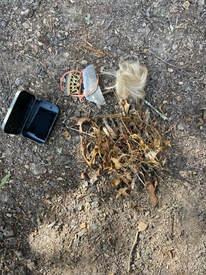 Charcloth, Viking Age fire striker (I have a more medieval one on the way), flint, flax and random leaves and sticks that I tried to use to start the fire.
Charcloth, Viking Age fire striker (I have a more medieval one on the way), flint, flax and random leaves and sticks that I tried to use to start the fire. Once you swear the Forester's oath, you can work towards different goals within the guild. This is one thing I love about some of the guilds within the SCA. They give you tangible goals, AND have people willing to jump in and help you along the way. (Another great guild with goals is the Company of the Silver Spindle in Atlantia.
I took the Oath at Pennsic and now am starting on working towards Underforester. For this you need to start a fire, cook a meal for one, have some green garb and participate in camping (yes, Pennsic camping counts). Most of my garb is green, but the Forester kit I am building out has that goal in mind. Currently I have green chausses and hood, along with a brown wool and blue linen tunic. Eventually I will have a green wool and a green linen tunic as well. I have cloth for two green cloaks as well, I just need to get them cut out.
The next rank is Forester. For this you need period gear and equipment (working on it). Period shoes (have them). Full forester garb (technically have that except that cloak that needs cut out, BUT I want to revise the garb I made this year already). You need to be helpful and cook for a group over a fire. And you need to start a fire with a period method. I have done this in the past several times with flint and steel, but my technique is, um, rusty. I also started a fire with charcloth and a magnifying glass at the Shire Day in the Park this past June. I tried to do it today, and got the charcloth to catch and started to get my nest going but the flax that I was using as the base of the nest was not catching. Like, it was REALLY, not catching. It came from a very damp room and I think that it might have taken on moisture? I used this same flax years ago with no issues but it honestly did not want to take right away even with a lighter (which I ended up using just to keep things moving.
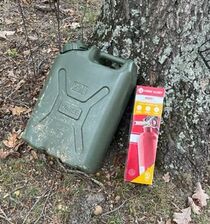
You can see my staged area below, as well as the stages of my fire. I had wood ready, and yes, I did use a few sticks of fatwood. I currently do not have period cooking pots, but did use a small dutchoven, griddle and a little clay vessel I made myself (it is actually a pinch pot for early Celtic stuff, but it is what I have). I have two trivets from Rabenwald Metalsmything but only needed the shorter one for this project. I used a tent stake for lifting the pot around and removing and replacing the lid.
So, what was I going to make? I wanted to do more than just make random food to fill a checklist. I wanted something period appropriate to my persona. So, my assumption here is that I would actually be traveling from London where my persona's uncle lives, back to his own home in York, and realistically, I was not traveling alone as that was very much asking for trouble. We would have more than bare minimum gear with us.
So my personal checklist is:
- Period food items for my persona
- At least somewhat period methods of cooking/compiling them
- Ingredients that would be in season at the same time
In the end I opted for a:
- Dish of parsnips and onions
- Apples with cinnamon and honey
- Flat breads (rye and oat)
- Cheese (for this I opted for Brie that I had at home already)
- I choose to go vegetarian for this as, in additional to Lenten Fridays, there were many days during the 14th Century in England where meat was not allowed
My foodstuffs can be seen below. Most of these vessels are NOT period to my persona, and while some are close (the glass containers), I would not be slinging those around during travel. I would also definitely not be traveling with two heavy mortar and pestle sets, but I needed to grind the cinnamon for the apples so took them outside to work on while the fire was reducing to coals.
When my onions cooked down some, I added the chopped parsnips and continued to cook those close to the fire, stirring often. When the fire died down enough, I moved the Dutch Oven to sit directly over coals.
Once the parsnips started to soften a little and the onions were VERY cooked, I added white wine, water and a bit of salt.
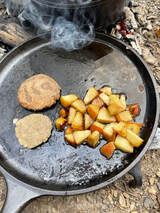
Before dumping them from the cup onto the griddle I stirred in a bit of the cinnamon I ground. Part of my research on medieval apothecary revealed that the cinnamon sold in the US is typically cassia, a similar plant, but not true cinnamon. I do, however, keep celyon cinnamon sticks in the house as I have a friend who is allergic to cassia, and I ground one of those for this project.
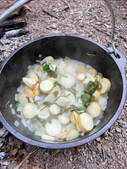
The photo to the right shows the veggie dish right before I added the lid and set the whole thing over coals to finish it off.
Honestly? It was excellent. I forgot to add the honey to the apples so drizzled it on at the end. (My persona, as an apothecary, would have ready access to both honey and several types of sugar, so sweetening a dish is not unreasonable.)
The parsnips and onions were quite savory and had an almost lemony twang with the addition of the sorrel (locally called "sour grass"). The bread crumbs thickened the broth so that it clung to the vegetables making it more "main course" to me than it would have as a soup.
The flat breads were good, but a bit crumbly. They might be made better with a different source of fat (butter, tallow or lard), which is something I can experiment with later. I went with the olive oil because I had it handy here.
Also, I did this in garb!
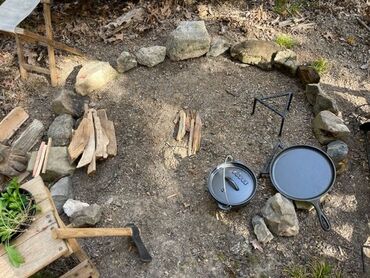
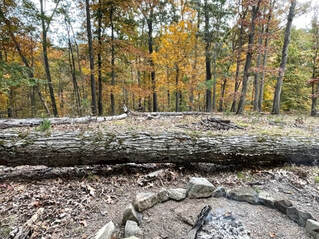
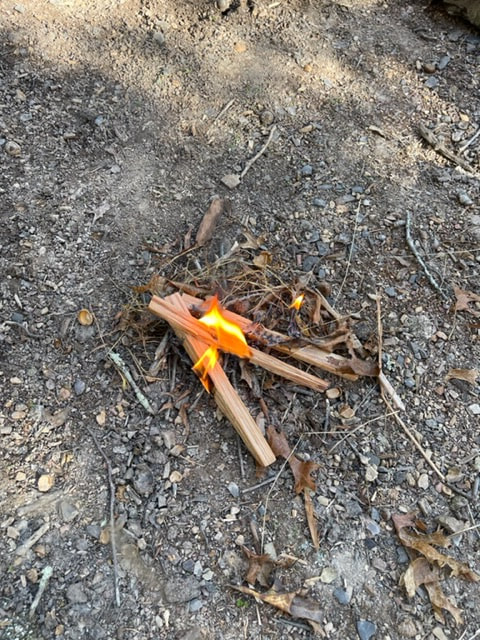
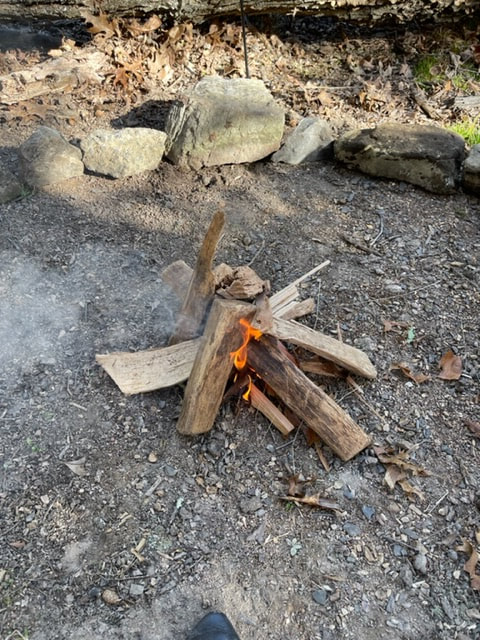
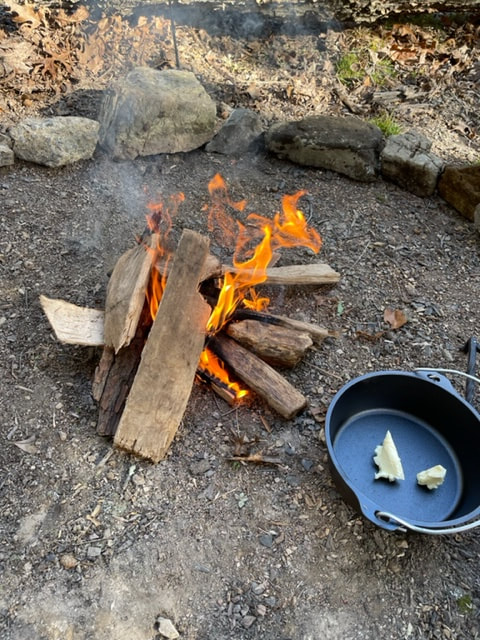
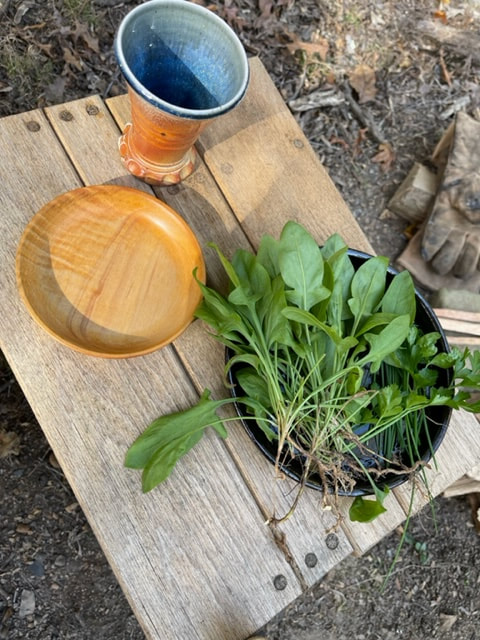
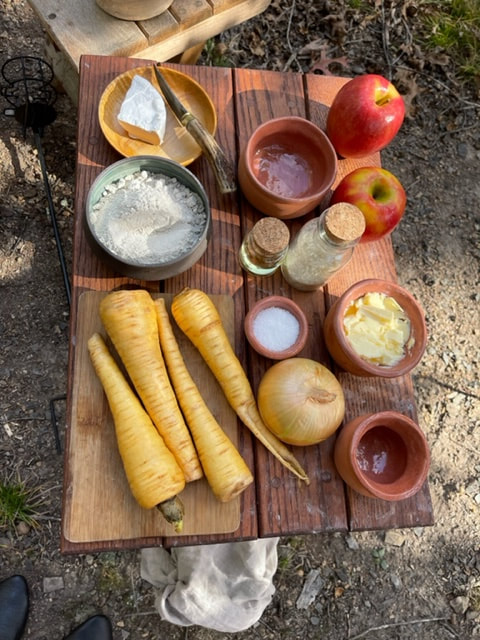
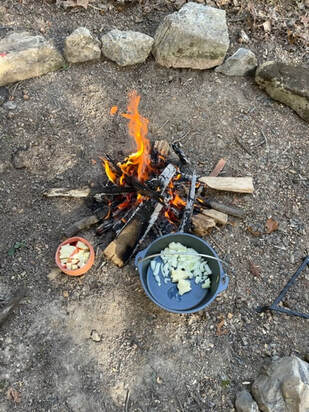
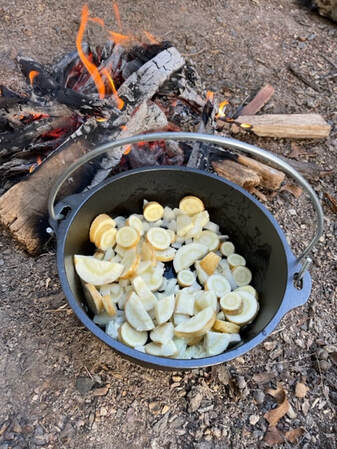
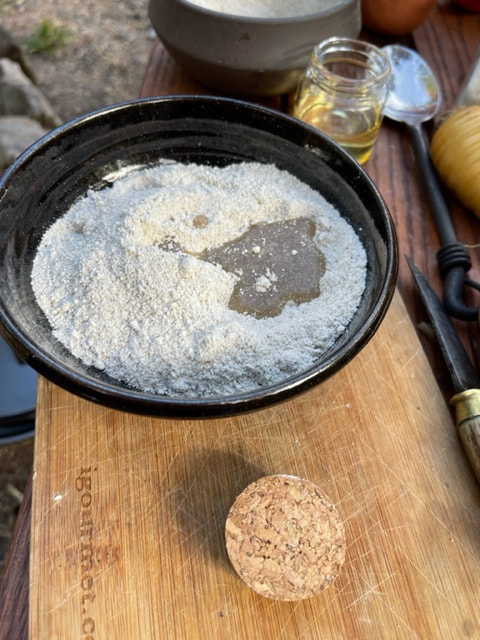
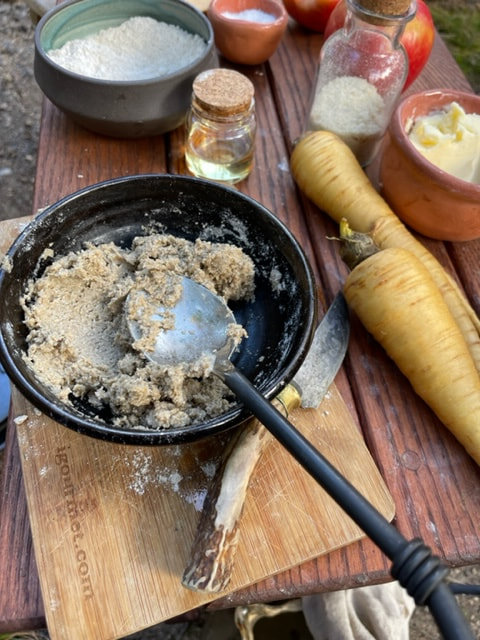
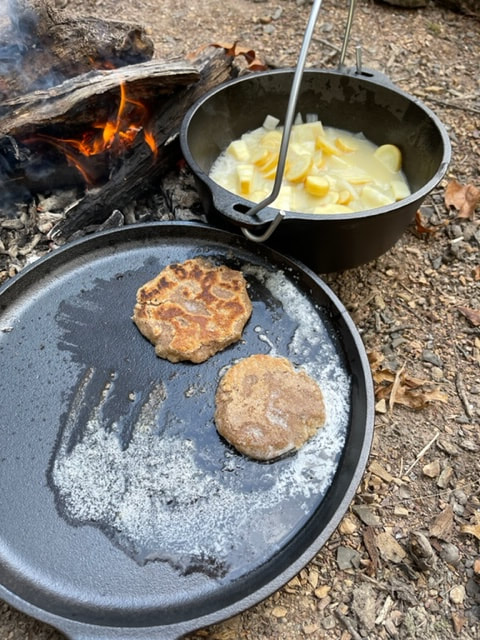
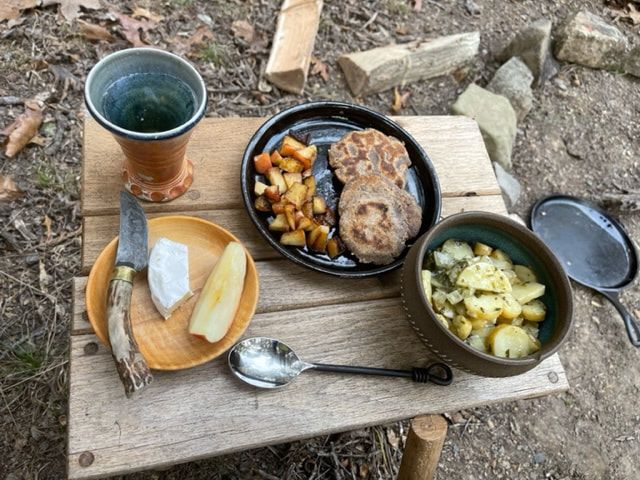
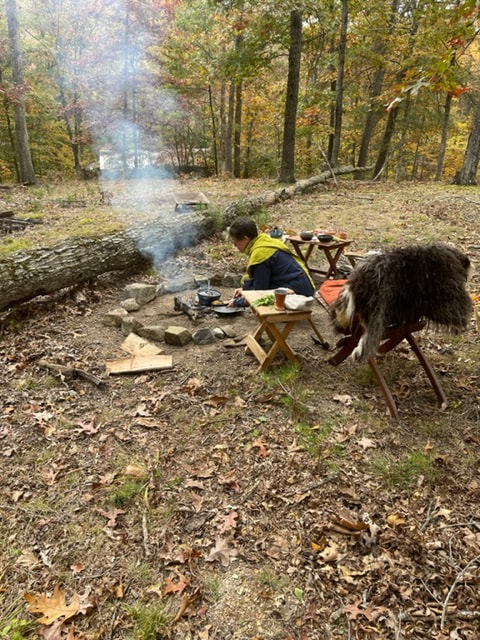
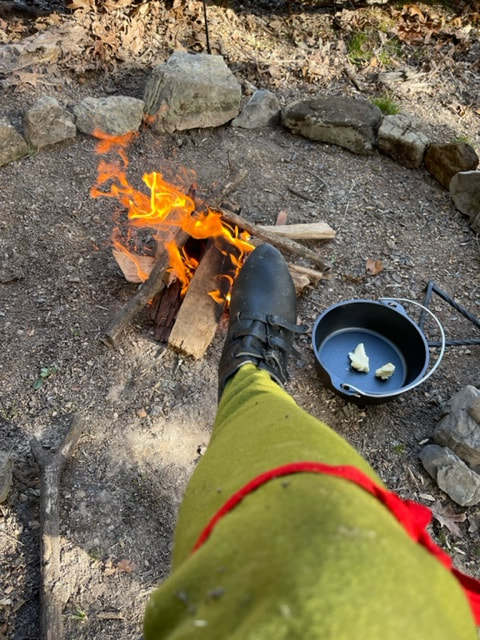
 RSS Feed
RSS Feed